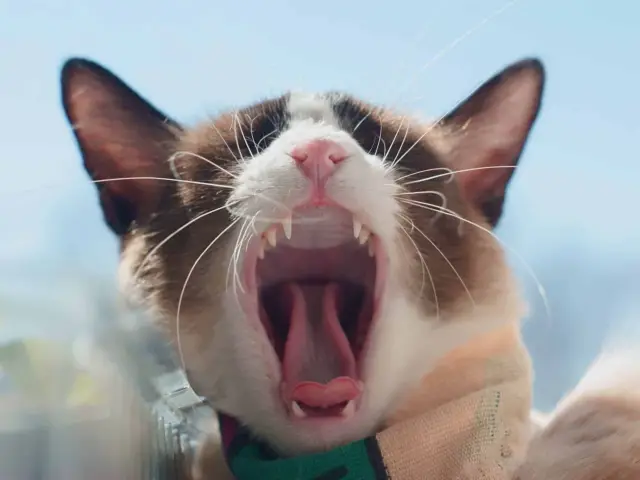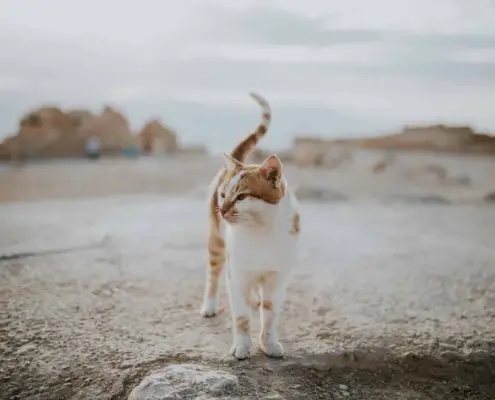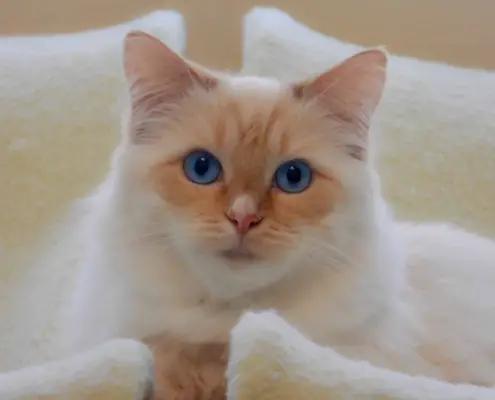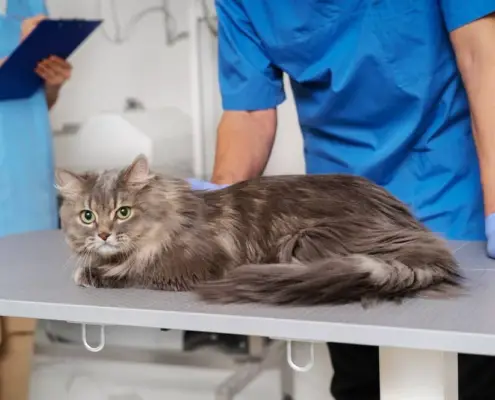
Dental care is not just important for humans, but also for our feline companions. Just like us, cats can develop dental problems that can lead to pain, discomfort, and even serious health issues if left untreated. As responsible cat owners, it is our duty to ensure that our furry friends receive the necessary dental care they need to maintain their overall health and well-being.
Common Dental Problems in Cats
Cats are prone to several dental problems, including periodontal disease, tooth decay, and gum infections. Periodontal disease, in particular, is one of the most common dental issues among cats. It occurs when plaque and tartar build-up on the teeth, leading to inflammation of the gums and potential tooth loss. If left untreated, periodontal disease can even affect other organs in the body, such as the heart and kidneys, due to the spread of bacteria.
Signs of Dental Issues in Cats
Identifying dental issues in cats can be challenging, as they are often masters at hiding their pain and discomfort. However, there are some signs that may indicate dental problems in your cat. Bad breath, red or swollen gums, difficulty eating, drooling, and pawing at the mouth are all potential indications that your cat may be experiencing dental issues. If you notice any of these signs, it is crucial to consult your veterinarian for a thorough dental examination.
Benefits of Brushing Your Cat’s Teeth
Brushing your cat’s teeth regularly can provide numerous benefits to their dental health. By removing plaque and tartar buildup, you can prevent the development of periodontal disease and other dental issues. Brushing also helps to freshen your cat’s breath and maintain their overall oral hygiene. Additionally, proper dental care can save you from expensive veterinary bills down the line, as untreated dental problems can lead to more serious health complications.
How to Introduce Tooth Brushing to Your Cat
Introducing your cat to tooth brushing may require some patience and gentle encouragement. It’s important to start the process slowly and gradually, allowing your cat to become familiar with the toothbrush and toothpaste. Begin by simply touching your cat’s lips and gradually progress to touching their teeth and gums. Reward your cat with praise and treats to create positive associations with tooth brushing. Remember to always use toothpaste specially formulated for cats, as human toothpaste can be harmful to them.
Step-by-Step Guide to Brushing Your Cat’s Teeth
Brushing your cat’s teeth may seem like a daunting task, but with the right approach, it can become a manageable routine. Here is a step-by-step guide to help you brush your cat’s teeth effectively:
- Choose a quiet and comfortable area for tooth brushing.
- Gently hold your cat’s head and lift their lips to expose the teeth.
- Gradually introduce the toothbrush with a small amount of toothpaste.
- Using gentle, circular motions, brush the outer surfaces of the teeth.
- Gradually increase the duration of brushing as your cat becomes more comfortable.
- Reward your cat with treats and praise after each successful tooth brushing session.
Alternatives to Tooth Brushing for Cats
If your cat absolutely refuses to tolerate tooth brushing, there are alternative dental care options available. Dental treats and toys specifically designed to promote oral health can help reduce plaque and tartar buildup. Additionally, there are water additives and gels that can be added to your cat’s drinking water to promote dental hygiene. Although these alternatives are not as effective as tooth brushing, they can still contribute to your cat’s dental health when used in combination with regular check-ups and professional cleanings.
Dental Care Products for Cats
When it comes to dental care products for cats, there is a wide range of options available. Toothbrushes with soft bristles and specially formulated toothpaste for cats are essential for effective tooth brushing. Finger brushes can also be used as an alternative. Additionally, dental treats, toys, water additives, and gels can all contribute to your cat’s oral health. It is important to choose products that are specifically designed for cats and approved by veterinarians to ensure their safety and effectiveness.
Frequency of Cat Tooth Brushing
The frequency of cat tooth brushing depends on various factors, including your cat’s age, overall dental health, and individual needs. As a general guideline, it is recommended to brush your cat’s teeth at least two to three times a week. However, if your cat has existing dental issues or is prone to dental problems, daily brushing may be necessary. Regular dental check-ups with your veterinarian can help determine the appropriate frequency of tooth brushing for your cat.
Conclusion
In conclusion, dental care is of utmost importance for cats to maintain their overall health and well-being. Regular tooth brushing, along with other dental care practices, can prevent the development of dental problems and ensure that your feline friend enjoys a pain-free and healthy life. Remember to introduce tooth brushing gradually, use appropriate dental care products, and consult your veterinarian for professional advice. By prioritizing your cat’s dental health, you are taking a proactive approach towards their overall well-being.
Make dental care a priority for your cat’s health. Start by introducing tooth brushing gradually and consult your veterinarian for guidance. Remember, a healthy mouth leads to a healthier cat!
If you enjoyed my article, I would appreciate you sharing it with your network.

Sima Ndlebe
Sima writes for CatBuzz. He is interested in Cats, Health and Fitness, and Entrepreneurship.
Published: 13 November 2023
Related Articles
Disclaimer
The content found on CatBuzz.org is presented on an "as is" basis and is intended for general consumer information and education purposes only. Any utilization of this information is voluntary and solely at the user's own risk.
None of the articles or content should be regarded as, or used in place of, veterinary medical advice, diagnosis, or treatment. The information provided on the website is purely for educational and informational intentions and should not be considered a substitute for professional guidance from a veterinarian or other qualified expert. The articles are designed to inform consumers about veterinary healthcare and medical matters that may impact their cat's daily life. It should be noted that this website and its services do not constitute the practice of any form of veterinary medical advice, diagnosis, or treatment. CatBuzz.org explicitly disclaims any liability for any direct or indirect damages or losses that may arise from the use of or reliance on the information contained within the content.
Consumers must consult a veterinarian, veterinary specialist, or another qualified veterinary healthcare provider when seeking advice regarding their cat's health or medical conditions. It is important not to ignore, avoid, or postpone seeking medical advice from a veterinarian or other qualified veterinary healthcare provider solely based on information obtained from this website. If you believe that your cat may be experiencing a medical issue or condition, it is imperative to promptly contact a qualified veterinary healthcare professional.



